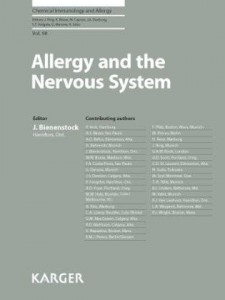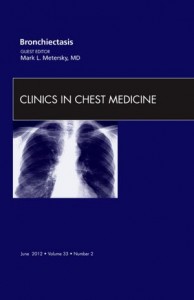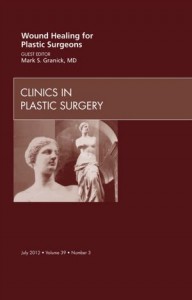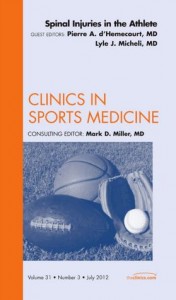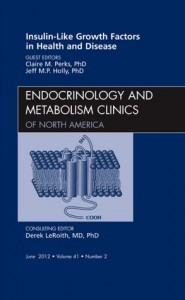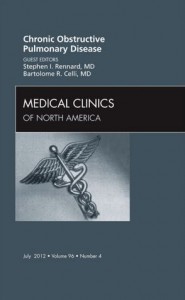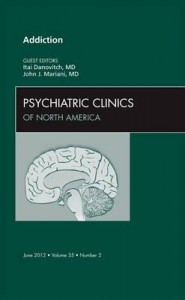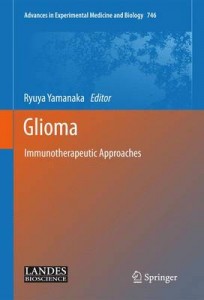Allergy and the nervous system / volume editor John Bienenstock
“In recent decades, it has become increasingly clear that the immune and nervous systems communicate with each other in a bidirectional way. The role of chronic stress in allergic disease and inflammation has been confirmed and raises the important question of how psychosocial factors influence the outcome of allergic conditions. This book explains the roles of the autonomic, peripheral and central nervous systems in allergy and asthma. With contributions from leading authorities – both clinicians and basic researchers – it covers a wide range of topics from psychology over epigenetics to brain imaging. The 15 invited reviews discuss topics such as the role of stress in allergy and asthma, the concept of programming in utero and in childhood and adulthood, the significance of neurotrophins, and the involvement of the nervous system in the lung in asthma and lung inflammation. The interactions between mast cells and the nervous system are examined as well as the role of the gut microbiome in regulating the hypothalamic-pituitary-adrenal axis and the stress response. Further chapters are devoted to neural and behavioral changes associated with food allergy, the role of the neuroendocrine system in the skin, and the way in which itch is processed by the brain. Unique in its field, this valuable volume is recommended reading not only for allergologists, psychologists specializing in allergy and somatic manifestations, respirologists and asthma researchers, but for anyone interested in psychoneuroimmunology.”
Bronchiectasis / guest editors Mark L. Metersky, Anne E. O’Donnell
“The first issue of Clinics in Chest Medicine to be published with this focus, this issue reviews bronchiectasis from numerous angles to provide comprehensive coverage on this important subject. Epidemiology, airway defense mechanisms, pathogenesis, imaging and genetic causes of bronchiectasis are discussed. Allergic bronchopulmonary aspergillosis is addressed, as well as non-tuberculous mycobacteria as a cause of bronchiectasis. Authors examine how to evaluate the success of therapy for bronchiectasis (what endpoints to use) and then discuss a variety of therapy options: inhaled and systemic antibiotic treatment, chest physiotherapy, pharmacologic agents for mucous clearance, antipinflammatory therapy and macrolides. Pulmonary resection and lung transplantation for bronchiectasis are reviewed. Recent advances in Cystic Fibrosis are also discussed.”
Wound healing for plastic surgeons / guest editor Mark S. Granick
“Plastic Surgery’s pre-eminence in the field of surgical wound management is enhanced with clinical information in this publication. A surgeon involved with an international team training surgeons throughout the world in wound technology leads this issue, presenting advances in wound technology. Wound technology has enabled plastic surgeons to treat a wide variety of wounds successfully and has transformed wound surgery to a thriving, cutting edge specialty. Topics include: Debridement; Microbial Barrier Protection; Harnessing Growth Factors to Influence Wound Healing; Regenerative Materials that Facilitate Wound Healing; Compression and Venous surgery to treat VLUs; Early Experience with Stem Cells in treating Chronic Wounds; Hyperbaric Oxygen, Topical Oxygen and Nasal Oxygen in Wound Management; Negative Pressure Wound Therapy: An Algorithm; Sophisticated Surgical Solutions for Complex Wound Problems; An Algorithm for Limb Salvage for Chronic Ulcers; Outcome Assessment for Chronic Wound Management with Serial Debridement, and Topical Surface Manipulation.”
Spinal injuries in the athlete / guest editors Pierre A. d’Hemecourt, Lyle J. Micheli
“This issue of Clinics in Sports Medicine, Guest Edited by Drs. Lyle Micheli and Pierre d’Hemecourt, focuses on Spinal Injuries in the Athlete. Articles in this outstanding issue include: Sport Specific Biomechanics of Spinal Injuries in the Athlete (Throwing Athletes, Rotational Sports and Contact-collision); Sport Specific Biomechanics of Spinal Injuries in the Athlete (Dance, Figure Skating and Gymnastics); Back Pain in the Pediatric and Adolescent Athlete; Spinal Deformity and Congenital Abnormalities; The Young Adult Spine; The Aging Spine; Thoraco-lumbar Spine: Trauma and spinal deformity: Indications for Surgical Fusion and Return to Play Criteria; Overview of spinal interventions; Congenital and Acute Cervical Spine injuries with Return to Play Criteria; Degenerative Cervical Spine Disease; Spinal cord abnormalities; Infectious, Inflammatory, and Metabolic Diseases of the Spine; and Spinal tumors.”
Insulin-like growth factors in health and disease / guest editors Claire M. Perks, Jeff M. P. Holly
“This issue of Endocrinology Clinics, authored by experts worldwide, provides essential updates about insulin-like growth factors (IGFs). The physiology is examined, including the latest in what we have learned from animal models as well as humans. The issue also covers IGFs and IGF system in the following: growth disorders; adipogenesis and obesity; muscle function and disease; bone; cancer; cardiac function and disease; normal and diseased kidney; peripheral nervous systems; gastrointestinal diseases; diabetes and metabolism; and IGF-1 central/degenerative diseases.”
Immunotherapy in clinical medicine / guest editors Nancy Misri Khardori, Romesh Khardori
“This issue of Medical Clinics covers the latest updates in immunotherapeutics by the wolrd-leading experts on the topic. Immunotherapuetic treatments are discussed in inefctious diseases, rheumatologic and neurologic disorders, renal diseases, diabetes and more. Emerging immunotherapies are also covered in depth.”
Chronic obstructive pulmonary disease / guest editors Stephen I. Rennard, Bartolome R. Celli
“This issue of Medical Clinics of North America provides the latest essential updates on COPD. The following topics are covered: pathobiological mechanisms; genes and the disease (alpha-l-antitrypsin); the environment, phenotype, and comorbidity; the role and potential of imaging; pulmonary function and its importance; exercise in testing and therapy; patients’ perception and quality of life; exacerbations, causes, prevention, and treatment; an integrated approach to the medical treatment; meducal pneumoplasty, surgical resection, or lung transplant; and smoking cessation and environmental hygiene.”
Addiction / guest editors Itai Danovitch, John J. Mariani
“This completely new and updated issue takes a focused look at addiction psychiatry in three sections: Diagnostics, Therapeutics, and New Directions. Dr. Danovitch, from Cedars-Sinai and Dr. Mariani from Columbia hone in on the most rapidly advancing and relevant areas of addiction for practitioners today, from defining addiction (implications of DSM-V), to genetics and neurobiology, to specific treatment options for a variety of patient populations: for pregnant women, adolescents, and patients suffering from chronic pain, for example. A variety of addiction types are discussed (ie, opioid, stimulant, and cannabis). The issue closes with discussions of emerging trends, systems of care, investigational therapeutics and the role of the criminal justice system.”
Naturally occurring antibodies (NAbs) / edited by Hans U. Lutz
“This volume illustrates the functional properties of NAbs. Authors from pioneering groups report in their chapters on the tissue homeostatic, tissue regenerating and regulatory properties of NAbs and NAbs in pooled human IgG. Scientists interested in the regulation and modulation of components of the immune system found a whole variety of NAbs to cytokines with regulatory and protective functions and NAbs that modulate, e.g., dendritic cells, regulatory T cells, B cells and granulocytes. Considering the large plasma pools and initial difficulties in preparing IVIG that does not induce adverse effects upon infusion into recipients, this volume ends with a historical chapter on how pooled human plasma was fractionated and the IgG component pretreated for a safe intravenous application.”
Glioma : immunotherapeutic approaches / edited by Ryuya Yamanaka
“Treatment of glioma is currently one of the most challenging problems in oncology, as well as in neurosurgery. Despite major advances in our understanding of the pathomechanism, diagnosis by imaging and the availability of powerful therapeutic tools, the life expectancy of patients with glioblastoma has only been slightly prolonged and a cure remains elusive. None of the currently available surgical tools, including operative microscopes, lasers and image-guided surgery, can enable the detection and removal of all of the tumor tissue. In recent years, however, the landscape has been changing immeasurably, and molecular studies over the past two decades have identified a variety of genetic aberrations that are specifically associated with individual types of gliomas. In addition, certain molecular abnormalities have been linked to therapy responses, thereby establishing clinical biomarkers and molecular targets, and the use of novel agents is being investigated. These agents have been specifically engineered to exert specific cytotoxicity against gliomas, either on their own as single agents or in combination with other modalities.Moreover, there has been an enormous surge of interest in the area of immunology and immunotherapy, which has been facilitated by our understanding of the molecular basis of gliomas. Although several kinds of immunotherapeutic trials have been undertaken, we still await a great breakthrough in terms of clinical efficacy to prolong the survival time of glioma patients.”

